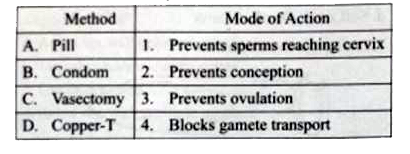The conditions for achieving laser action are
the system must be in a state of population inversion
the excited state of the system should be metastable state
the atom should be in lower energy state
no conditions are required
To achieve laser action, several conditions must be satisfied. Here’s a step-by-step breakdown of these conditions:
Step 1: Population Inversion
- Explanation: The first condition for achieving laser action is that there must be a population inversion. This means that there are more atoms in an excited state than in the ground state. In other words, the number of atoms in a higher energy state must exceed the number of atoms in the lower energy state.
Step 2: Meta-stable State
- Explanation: The excited state of the atoms must be in a meta-stable state. This means that the excited atoms should have a longer lifetime in the excited state before they return to the ground state. If the excited state is not meta-stable, the atoms will quickly lose their energy and will not contribute to laser action.
Step 3: Stimulated Emission
- Explanation: The process of stimulated emission must occur. This is the process by which an incoming photon of a specific energy can stimulate an excited atom to drop to a lower energy state, emitting a second photon of the same energy, phase, and direction. This is what leads to the amplification of light in a laser.
Step 4: Optical Resonator
- Explanation: An optical resonator (or cavity) is needed to reflect the light back and forth, allowing for multiple passes through the gain medium. This increases the probability of stimulated emission and leads to the amplification of light.
Step 5: Sufficient Gain Medium
- Explanation: There must be a sufficient amount of gain medium to ensure that there are enough excited atoms available to produce stimulated emission. The gain medium is the material that provides the necessary atoms for the laser action.
Summary of Conditions for Laser Action:
1. Population inversion must be achieved.
2. The excited state must be meta-stable.
3. Stimulated emission must occur.
4. An optical resonator is required.
5. There must be a sufficient gain medium.
---
- Explanation: The first condition for achieving laser action is that there must be a population inversion. This means that there are more atoms in an excited state than in the ground state. In other words, the number of atoms in a higher energy state must exceed the number of atoms in the lower energy state.
Step 2: Meta-stable State
- Explanation: The excited state of the atoms must be in a meta-stable state. This means that the excited atoms should have a longer lifetime in the excited state before they return to the ground state. If the excited state is not meta-stable, the atoms will quickly lose their energy and will not contribute to laser action.
- Explanation: The process of stimulated emission must occur. This is the process by which an incoming photon of a specific energy can stimulate an excited atom to drop to a lower energy state, emitting a second photon of the same energy, phase, and direction. This is what leads to the amplification of light in a laser.
- Explanation: An optical resonator (or cavity) is needed to reflect the light back and forth, allowing for multiple passes through the gain medium. This increases the probability of stimulated emission and leads to the amplification of light.
- Explanation: There must be a sufficient amount of gain medium to ensure that there are enough excited atoms available to produce stimulated emission. The gain medium is the material that provides the necessary atoms for the laser action.
1. Population inversion must be achieved.
2. The excited state must be meta-stable.
3. Stimulated emission must occur.
4. An optical resonator is required.
5. There must be a sufficient gain medium.
Topper's Solved these Questions
- BOOK - CENGAGE PHYSICSCHAPTER - LASERSEXERCISE - GENERAL EXERCISE3videos
LASERS
- BOOK - CENGAGE PHYSICSCHAPTER - LASERSEXERCISE - OLYMPIAD AND NTSE LEVEL EXERCISES1videos
LASERS
- BOOK - CENGAGE PHYSICSCHAPTER - LASERSEXERCISE - OLYMPIAD AND NTSE LEVEL EXERCISES1videos
LASERS
- BOOK - CENGAGE PHYSICSCHAPTER - HEAT AND TEMPERATURE EXERCISE - OLYMPIAD AND NTSE LEVEL EXERCISES10videos
HEAT AND TEMPERATURE
- BOOK - CENGAGE PHYSICSCHAPTER - MAGNETISMEXERCISE - OLYMPIAD AND NTSE LEVEL EXERCISES8videos
MAGNETISM
Similar Questions
Knowledge Check
- Question 1 - Select One
Assertion: A bioreactor provides the optimal conditions for achieving the desired product by providing optimum growth conditions.
Reason :Bioreactors are vessels in which raw materials are biologically converted into specific products using microbial, plant or animal cellsAIf both Assertion & Reason are True & the Reason is a correct explanation of the AssertionBIt both Assertion & Reason are True but Reason is not a correct explanation of the AssetionCIf Assertion is True but the Reason is FalseDIf both Assertion & Reason are false - Question 2 - Select One
Laser is/ are
AHighly coherentBHighly monochromaticCHighly directionalDAll of these - Question 3 - Select One
Which type of pH conditions are required for action by Bt toxin?
A8.6B1C7D6.8
State the condition under which a large magnification can be achieved in an astronomical telescope.
View SolutionState the condition under which a large magnification can be achieved in an astronomical telescope.
View SolutionGiven below are four methods and their mode of action in achieving contraception. Find the incorrect match.
View SolutionLeg - haemoglobin is found in the nodules in roots of leguminous plants. It acts as ........ Scavenger and provides ........ Conditions for the action of nitrogenase enzyme.
View SolutionGiven below are four methods (A-D) and their modes of action (1-4) in achieving contraception
Choose the correct options
 View Solution
View Solution

